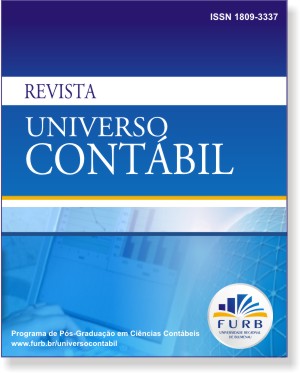THE ADOPTION OF COSTS SYSTEMS IN THE PUBLIC SECTOR: REFLEXIONS ON THE BRAZILIAN LITERATURE PUBLISHED IN ACADEMIC JOURNALS
DOI:
https://doi.org/10.4270/ruc.20117Keywords:
Costs. Governmental accounting. Public sector. Academic journals.Abstract
This paper consists on a thematic analysis about the implementation of costs accounting systems in the Brazilian public sector. Ten years after the publication of classics as Gupta, Dirsmith and Fogarty (1994), Geiger and Ittner (1996), and Ittner and Larker (1998), the adoption and use of costs systems in the public sector is receiving an increasing attention in the international academic arena, which main purpose is to explain the adoption of costs systems and their impacts on organizations. Generally, the papers published abroad use surveys based on a plural theoretical approach (contingency and institutional theories). We considered papers published on Brazilian academic journals listed in the Qualis/CAPES as a proxy of the Brazilian research on this field, only seven papers were identified. Results from the thematic analysis show that the papers published in Brazilian, different from the international trend, are based on descriptive case studies or prescribe management and costs measured methods; in addition, they do not consider the findings of previous empirical researches. All these features make it difficult to consolidate and compare the results and to build theories in the Brazilian context. We expect that these findings contribute the reflexion about and improvement of the Brazilian research in this field.Downloads
Download data is not yet available.
Published
2011-09-24
How to Cite
Bitti, E. J. S., Aquino, A. C. B., & Cardoso, R. L. (2011). THE ADOPTION OF COSTS SYSTEMS IN THE PUBLIC SECTOR: REFLEXIONS ON THE BRAZILIAN LITERATURE PUBLISHED IN ACADEMIC JOURNALS. Revista Universo Contábil, 7(3), 06–24. https://doi.org/10.4270/ruc.20117
Issue
Section
National Section
License
The copyright for papers published in this journal belong to the author, with rights of first publication for the journal. As the papers appears in this publicly accessed journal, the papers are for free use, receiving their credit, in educational and non-commercial uses. The journal will allow the use of the papers published for non-commercial purposes, including the right to send the paper to publicly accessed databases.


